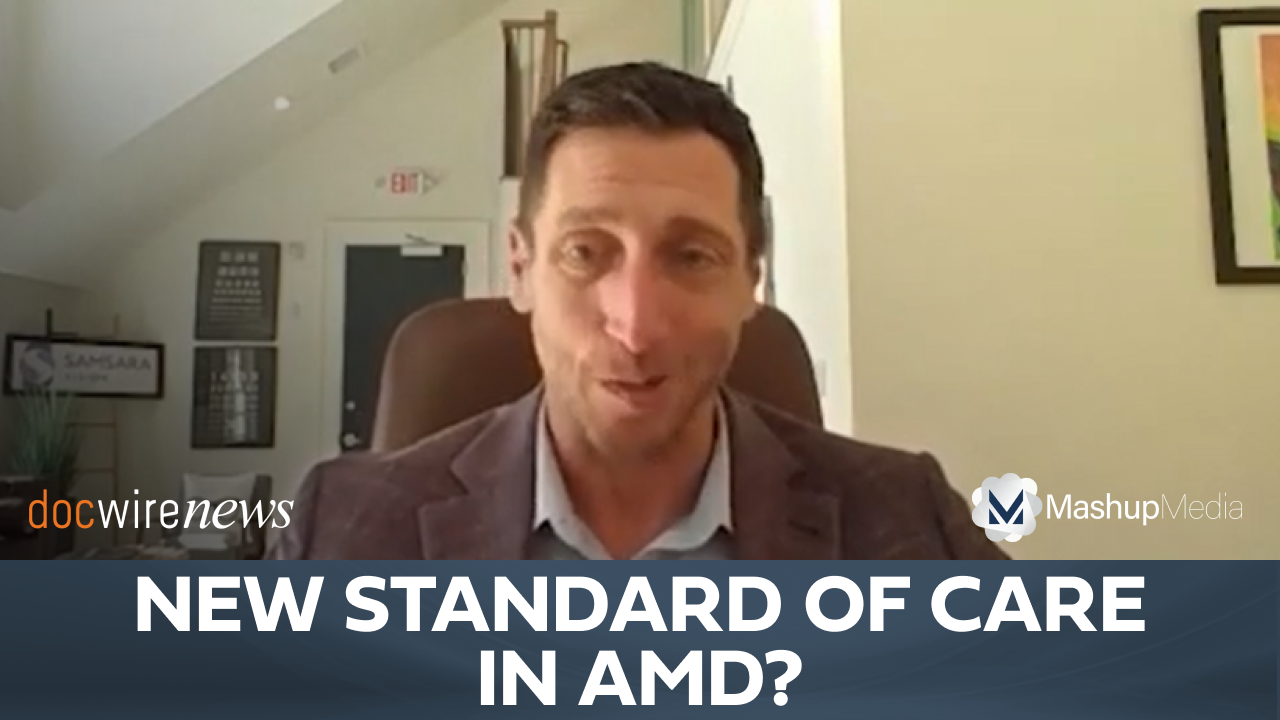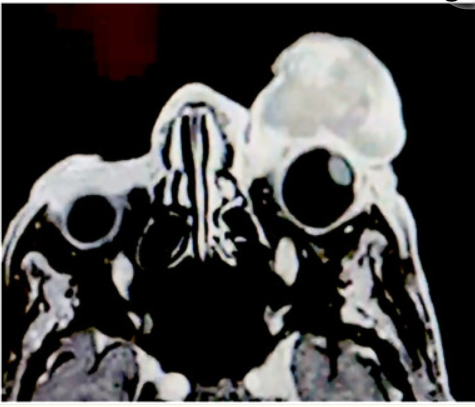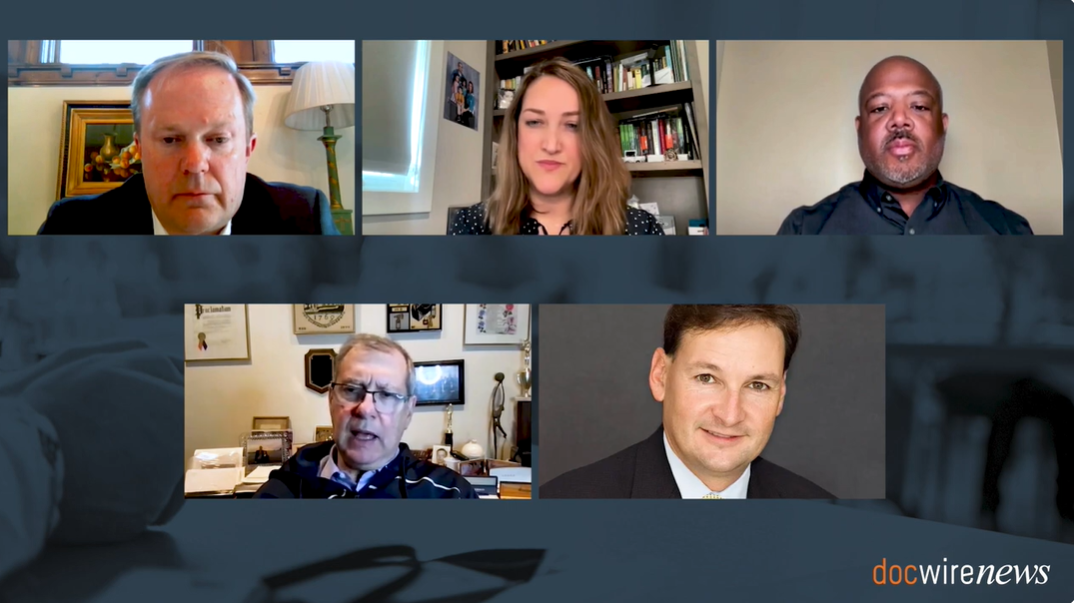Clinical Trial Data Versus Real-World Experience for Neovascular AMD Treatments
By DocWire News Editors - Last Updated: April 28, 2023In this segment of the round table series, moderator Ehsan Rahimy, MD, and panelists discuss the findings from the TENAYA and LUCERNE studies.
Ehsan Rahimy: The beauty of retinal medicine is it’s a different song and dance with every patient. So, I had some patients who are obviously pretty frustrated with chronic therapy, and they’re really willing to give it the 4 loading doses to really assess for any benefit. And I’ve had other patients who, after one and it’s not really looking any different—all of our patients are already coached on looking at their OCT scans and comparing their visions even before we come in the room—they’re not really assessing much of a response. I’ve had some patients already just want to switch back to whatever they were receiving before. So that, again, is kind of the beauty of retina medicine and the disconnect between what we see in clinical trials versus the real world that I’m sure you’d all agree with.
When you go back and look at the clinical trial data, for AMD that was specifically with TENAYA and LUCERNE, does the panel have any comments on that? Are we definitively seeing increased durability here? I was personally a little disappointed to see no added efficacy in terms of visual acuity gain. To date, nothing we’ve tested has been able to show superior visual outcomes, but what do the panelists think about durability? Are we seeing a true increased durability effect here when look at the data?
Rishi Singh: I think the problem in that, essentially, Ehsan, is that it’s a non-comparative study in many ways, right? So, you’re not really comparing aflibercept to faricimab in a head-to-head fashion. It’s more for aflibercept given in its label dose, which is every 8 weeks thereafter after the loading period. And so, I think you lack that insight as far as whether it’s truly a class differential with the drug, but I can say that the percentages that are being reported in the study are by far the highest percentages we’ve seen with Q16 and Q12. I mean, with 78% or 79% of patients achieving that, it’s the longest that any trial has ever been able to show that. And the equivalent studies, if you had to do some cross-trial comparisons, you can see some data from other studies that look similar, but it’s definitely, percentage wise, still lower than what we are at right now.
So, I guess I would say that it’s not a perfect study in many ways, but it’s the best we have. And it does appear to be having a significant amount of durability. I think the bigger one for me, actually, in TENAYA and LUCERNE studies, is how many patients were on the Q8 all the way through, which is very, very low and continues to be maintained low over the course of the 2 years. I think that’s probably the more important thing to see, Q8 being so well controlled.
Diana Do: I think it’ll also be very important when the 2-year wet AMD study readout occurs this summer, because the first year we saw that, as you mentioned, 22% were on Q8-week faricimab. A third were on Q12-week faricimab, and 45% were on Q16-week faricimab based on this study design. And those numbers certainly were impressive, especially because the faricimab-treated subjects met the non-inferiority visual acuity outcomes compared with aflibercept. But we‘ll have to see in year 2 if this extended durability that was shown with faricimab, does it still maintain the visual acuity outcomes, or will it cause any detrimental visual loss in the second year? Because in many studies, that‘s when the vision loss occurs, and we certainly want to avoid that.
Ehsan Rahimy: Yeah, that‘s a great point, Diana. And along those lines, I think data a lot of colleagues have been inquiring about is to see how each of these swim lanes, if you will, performed acuity-wise. It kind of all got lumped in together, but we know once you committed to a swim lane, be it every 8 weeks, 12 weeks, or 16 weeks, they stayed on that treatment interval for the duration of the study. I know that we‘ll probably be getting how each individual group performed visual acuity-wise. That data is forthcoming, I think, and is being analyzed as well.
Another comment I thought was interesting, and I’m curious what the panelists’ thoughts are on this, is how little vision, if any, is gained from both arms. It’s not a comment about faricimab or aflibercept, but in general, both groups gained about 6 letters of vision through year 1. How do you all reconcile that? My impression was this is likely some degree of ceiling effect. And it’s kind of a tip of the cap to all of our eyecare colleagues, be it optometrists or ophthalmologists, for learning to identify patients earlier on, getting them referred in immediately, and getting treatment on board as soon as possible. What did you all take home from that?
Caroline Baumal: I took home very similar points. If you look at the visual acuity criteria, we enroll patients now in clinical studies with better visual acuity compared with the original studies for neovascular AMD. And we’ve really increased awareness that there is a treatment possible, so patients get to us sooner and we can save vision better. But the interesting thing is it showed across the treatment arms the similar number of letters of improvement.
Ehsan Rahimy: Ali, for you, from the results we are seeing, can we conclude that this is all because of ANG-2 inhibition and Tie2 activation, or is this durability we’re allegedly seeing due to the increased molar equivalent of faricimab compared with ranibizumab?
Ali Khan: It’s hard to say. I think, again, it depends on which outcome you’re looking at. It’s hard to make that decision. If it’s just visual acuity, they seem relatively equivalent. But I think Rishi mentioned some earlier OCT anatomy drying effect of this drug versus the comparator arms. Possibly that’s an explanation for where the Tie2 activation comes in. How exactly to decide what is coming from the VEGF blockade versus the Tie2 is hard for me to really see from the data.
I think the good news, particularly in the diabetic macular edema (DME) data rather than the AMD, is that the drying effect is a bit more with this dual inhibition. So, I think I’d be interested in looking at the longer-term outcomes to see if that bears out and what that might mean for the Tie2 pathway.
Diana Do: I think this is also important because it reminds us that VEGF vascular diseases and for wet AMD. A lot of the drugs that are looking at inhibiting upstream or downstream, they have to be cautious, because the biggest effect happens when you inhibit VEGF A right from the get-go. I think that remains the most important player.
Ehsan Rahimy: Do any of you worry about potential increased systemic safety events or risk of ocular inflammation, as it seems we’re continuing to ratchet up the amount of anti-VEGF we’re putting in the eye? Is there a balance here? I mean, we heard mentioned earlier, so far, the clinical trial data has looked somewhat reassuring from what we saw with TENAYA and LUCERNE and some other agents coming up. But do any of you worry about this increased potential for risk?
Diana Do: I think everybody has a heightened awareness because of the safety profile of brolucizumab, and clinical trialists are scrutinizing adverse events. Thankfully, the faricimab data appear very well tolerated, and we haven’t seen those cases of retinal vasculitis or occlusive retinal vasculitis seen with brolucizumab. I think one of the agents you mentioned earlier, the port delivery system, is a different mechanism because it’s a reservoir that allows for every-6-month dosing. That does have a 3-times higher risk of endophthalmitis, severe infection, because of this indwelling device. I think that is the biggest risk with the port delivery system.







 © 2025 Mashup Media, LLC, a Formedics Property. All Rights Reserved.
© 2025 Mashup Media, LLC, a Formedics Property. All Rights Reserved.